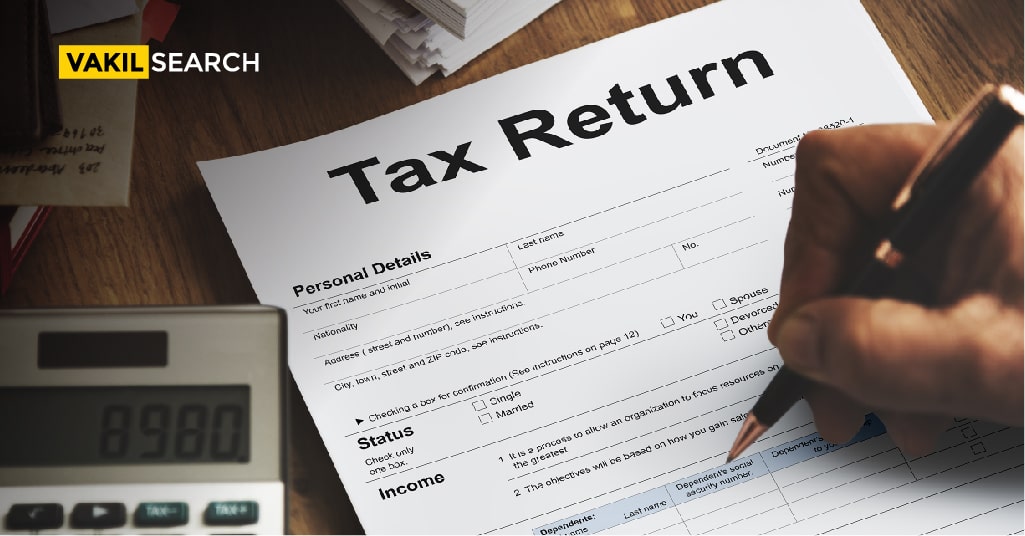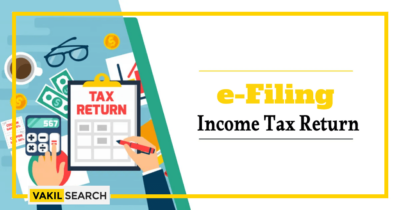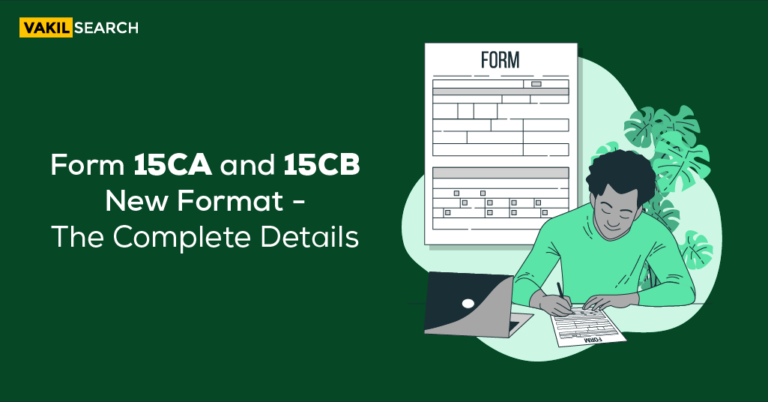In this article we address the question of whether online apps such as Gpay and BharatPe allow you to file your ITR.
These days, almost any payment can be made through apps like Gpay, BharatPe, etc. From your roadside tea stalls to paying your bills, all of it can be done with the click of a button through these apps.
So what about paying your taxes? Can you file ITR using UPI? Let us take a look.
What is an ITR?
An Income Tax Return or ITR is a document that contains the calculation of an individual or an organization’s annual tax liability. In this document, the individual or organisation, known as the ‘assessee’ lists the total income earned during the year, categorised as per the rules into business income, rental income, income from interest, and capital gains. It should be noted that one can opt for Presumptive Income Tax Filing to get relief from complex ITR filings.
If the assessee has qualified for any deductions or exemptions, they are reduced from the total income to arrive at the total taxable income. The taxable income is then compared with the tax slab prescribed in the budget of that year and the tax liability is calculated. If any tax has been deducted at source from any of the incomes and TDS deposit online has been made for the assessee, then it must be deducted from the total tax liability and the payable tax liability is arrived at. The return is filed with the income tax department for assessment and the tax amount that has been calculated is paid as soon as the return is filed. Persons opting for TDS must get their TAN registration online to make their returns filing simple.
The tax payment can be made by depositing a cheque in the name of the income tax authorities at any nationalised bank. It can also be made through net banking.
And if the amount of tax is less than ₹5,000 it can be done by depositing cash in the account of the income tax authorities in any nationalised bank.
The same is applicable for tax deducted at source after the TDS return filing is done. But can these payments be made through digital payment apps such as BharatPe, Gpay etc. For that let us first understand the context of why these apps have become so important to the ecosystem commercial transactions.
Unlock financial success with our unparalleled accounting services – your gateway to streamlined bookkeeping and prosperity.
File ITR using UPI: Intervention of Income Tax Rules in UPI Transactions
UPI transactions are taxed in the same way that income from mutual funds or fixed deposits is. Section 56(2) of the Income Tax Act applies to all e-wallet transactions because they are all classified as income from other sources.
You must provide detailed information about your salary and other sources of income, such as funds received from an e-wallet or UPI app when submitting an ITR. You are mistaken if you believe that UPI transactions or funds are not tracked. That’s because the Income Tax Department tracks every transaction you make.
How to e-pay Tax on the Income Tax e-filing portal?
How to make an online tax payment on the Income Tax e-filing portal? The process for e-paying taxes on the income tax e-filing website is similar to the NSDL facility, making it user-friendly for most taxpayers.
Taxpayers have the option to deposit various types of taxes through the e-pay tax feature, including advance tax, self-assessment tax, regular assessment tax, TDS on rent/sale of immovable property, payments to resident contractors and professionals, penalties or interest on TDS, equalization levy, security transaction tax, commodity transaction tax, wealth tax, fringe benefit tax, bank cash transaction tax, and interest tax.
To illustrate the steps for paying advance tax using the e-pay tax option on the income tax e-filing portal:
Step 1: Log in to the e-filing portal using your login credentials.
Step 2: Choose the “e-pay tax” option from the “e-file” menu and select the “New payment” option.
Step 3: Proceed by selecting the type of tax you wish to pay, such as income tax.
Step 4: Select the assessment year and the specific tax payment, for example, AY 2023-24 and Advance Tax, then click “continue.”
Step 5: Provide the tax breakdown, including tax, surcharge, cess, etc., and click “continue.”
Step 6: Choose the preferred payment option among net banking, debit cards, pay-at-bank counter, RTGS/NEFT, or payment gateways.
Debit Card
Step 7: Although this option is currently disabled by authorized banks, it is expected to function similarly to the NSDL website.
Net Banking
Step 7: Select an authorized bank for payment through net banking and click “Continue.”
Step 8: Review the payment details, and if accurate, click “Pay now” or “Continue.”
Step 9: You will be directed to the bank login page to complete the payment using your net banking credentials.
Pay at Bank Counter
Step 7: With this option, payments can be made through authorized banks using cash, cheques, or demand drafts. Select an authorized bank, payment mode, and click “continue.”
Step 8: Review the payment details, and if accurate, click “Pay now” or “continue.”
Step 9: Present the generated signed copy of the Challan Form, along with the payment instrument, to the chosen authorized bank branch within 15 days to complete the payment.
NEFT/RTGS
Step 7: Use any bank with RTGS/NEFT facility to make offline tax payments at branches. Select RTGS/NEFT and click “Continue.”
Step 8: Review the payment details, and if accurate, click “Pay now” or “continue.”
Step 9: Present the generated signed copy of the Challan Form to the desired bank branch within 15 days to complete the payment.
Payment Gateway
Step 7: Use the payment gateways of Federal Bank or Kotak Mahindra Bank to remit taxes through various options, including debit/credit cards, net banking, or UPI. Select a payment gateway and click “Continue.”
Step 8: Review the payment details, and if accurate, click “Pay now” or “continue.”
Step 9: Accept the terms and conditions, then proceed to the respective bank payment gateway. Select the appropriate payment mode to complete the tax payment. Only Rupay, Visa, and Mastercard cards are accepted. Federal Bank offers 38 bank options for net banking, while Kotak provides 13 bank options. Kotak Mahindra Bank Payment Gateway also allows tax payment through popular PSPs (Gpay, Amazon Pay, BMIP, Phonepe, Paytm, etc.) and UPI.
Step 10: Upon successful tax payment, you will receive the challan. A confirmation message will be sent to your registered email ID and mobile number associated with the e-Filing portal.
File ITR using UPI: Advantages of e-pay Option
- Multiple Bank Options: The e-pay option allows taxpayers to pay their taxes through different authorized banks, providing convenience and flexibility in choosing a preferred banking institution.
- Payment History Tracking: The payment history tab on the e-filing portal allows taxpayers to easily track the status of their successful payments. This helps in keeping a record and ensuring that the payments have been processed correctly.
- Confirmation Messages: Upon successful tax payment, confirmation messages are sent to the taxpayer’s registered email ID and mobile number associated with the e-filing portal. This provides reassurance and serves as proof of payment.
- Error Prevention: The e-pay option helps in avoiding common mistakes such as entering an incorrect PAN number or selecting the wrong details, such as the minor head. When making payments through the e-filing portal, there is no need to enter the PAN number. Additionally, the system restricts certain payment options based on the selected assessment year, ensuring accurate payments.
- Convenience Features: The e-pay option offers convenient features, such as the ability to save drafts of challans or choose the option to pay taxes later. The pay later option allows taxpayers to save their payment details and make the tax payment within 15 days. However, it’s important to note that this option expires if not utilized within the specified timeframe.
Overall, the e-pay option simplifies the tax payment process, provides flexibility in bank selection and offers convenient features for a better user experience.
File ITR using UPI: Charges for Paying Taxes on the Income Tax Portal
| Charges | Canara Bank | Federal Bank | Kotak Mahindra Bank |
| UPI/ Credit Card | 0.47% plus 18% GST | 0.85% plus 18% GST |
0.80% plus 18% GST for Master, VISA, and RuPay 2.75% for International cards |
Note: You Can file ITR using UPI transactions.
Track Your Payment Status
The home page of the official income tax e-filing website allows you to track the status of your income tax payment.
- Click the “Know Payment Status” link in the left menu bar.
- Input your PAN/TAN, CRN, and mobile phone number.
- Enter the mobile OTP and press the submit button.
You can now check the status of your tax payment.
Can You File Your ITR Through an App Like BharatPe?
Before we answer this question, let us first understand what do digital payment apps like BharatPe and GPay do. And for that we must first understand what is a digital payment.
A digital payment is payment made directly from one bank account to another instantly. But how is this different from net banking? Net banking is bank intensive. Ever bank has its own website and its own net banking program. So if you have multiple bank accounts, you will have to log into the website of that bank to make the payment.
Use Vakilsearch`s Income Tax Calculator to determine your taxable income and report your Individual Tax Return (ITR) with ease.
This requires maintaining multiple usernames and passwords and if there is an error in entering a password, you could get locked out of your account. Plus making a transaction through net banking involves so many checks. You have to enter your log in password, then you have to add a payee, which can take 24-48 hours depending on the bank.
Then you have to enter a transaction password and then you have to enter an OTP which is sent to your registered mobile phone. On the other hand, through a digital payment app like BharatPe or GPay, you can payments from all your bank accounts through one platform. This is called a ‘Unified Payments Interface’ or UPI.
So from this, we understand that a digital payment is only another way of making an online payment directly from your bank account. So how did digital payments suddenly become so important to the ecology of payments?
During the demonetisation of the ₹500 and ₹1,000 notes in the year 2016, there was a heavy restriction on withdrawal of cash until all the demonetised notes had been removed from circulation and replaced with the new ₹500 and ₹2,000 notes. This saw a surge in businesses and consumers adopting digital payments as an alternative to cash.
The process is simple. Link the mobile number that is registered with your bank account with any platform that allows you to make digital payments, such as PayTM, BharatPe and GPay and make payments on the spot without having to go through the trouble of logging into your net banking account, adding a payee, entering your transaction password, entering an OTP etc.
In some ways it was even better than cash because you did not have to bother about carrying exact change. You can pay the exact amount and complete the transaction.
Most government departments have also adopted this system and most government payments such as paying your traffic fines, electricity bills, water tax etc. can be done through google pay. But what about ITR?
To answer that, we must first understand that filing an ITR and paying the tax as per the ITR is not the same thing. As discussed above, an ITR is merely a document that has the details of the tax calculation and the ITR filing procedure has to be done. Since these digital payment apps are just apps that facilitate online payments, one cannot file ITR through these apps.
However, once the ITR has been filed, you can pay the income tax amount through digital payments app like BharatPe and GPay. Even online TDS payments can be done through these apps.
Conclusion
ITR filing is an extremely important formality and non-compliance with this formality can attract heavy penalties. So make sure that you hire a professional to file your ITR at the right time with all the right details so you do not default on your ITR filings. Get in touch with Vakilsearch today to file your ITR.
FAQs
What if my income tax payment failed?
Normally, the refunded amount will be returned within 3-4 business days. If not, it is advisable to contact the income tax department helpline. Provide your PAN and CRN for assistance in resolving the issue.
How to check the status of my online income tax payment?
To check the status of your online income tax payment, navigate to the Know Payment Status section on the homepage of the official income tax e-filing website. Enter the required details to access the payment status.
Can my tax payment be scheduled for a later date?
Yes, you can schedule your tax payment for a later date through the Net Banking facility offered by your bank. However, please note that this option is not available for online payments made using Credit or Debit Cards.
Which are the Authorized Banks for making payment directly through Net-banking or Debit Card?
The list of banks integrated with the e-Filing system can be found on the Login with Net Banking page of the e-Filing portal.
Read More:










